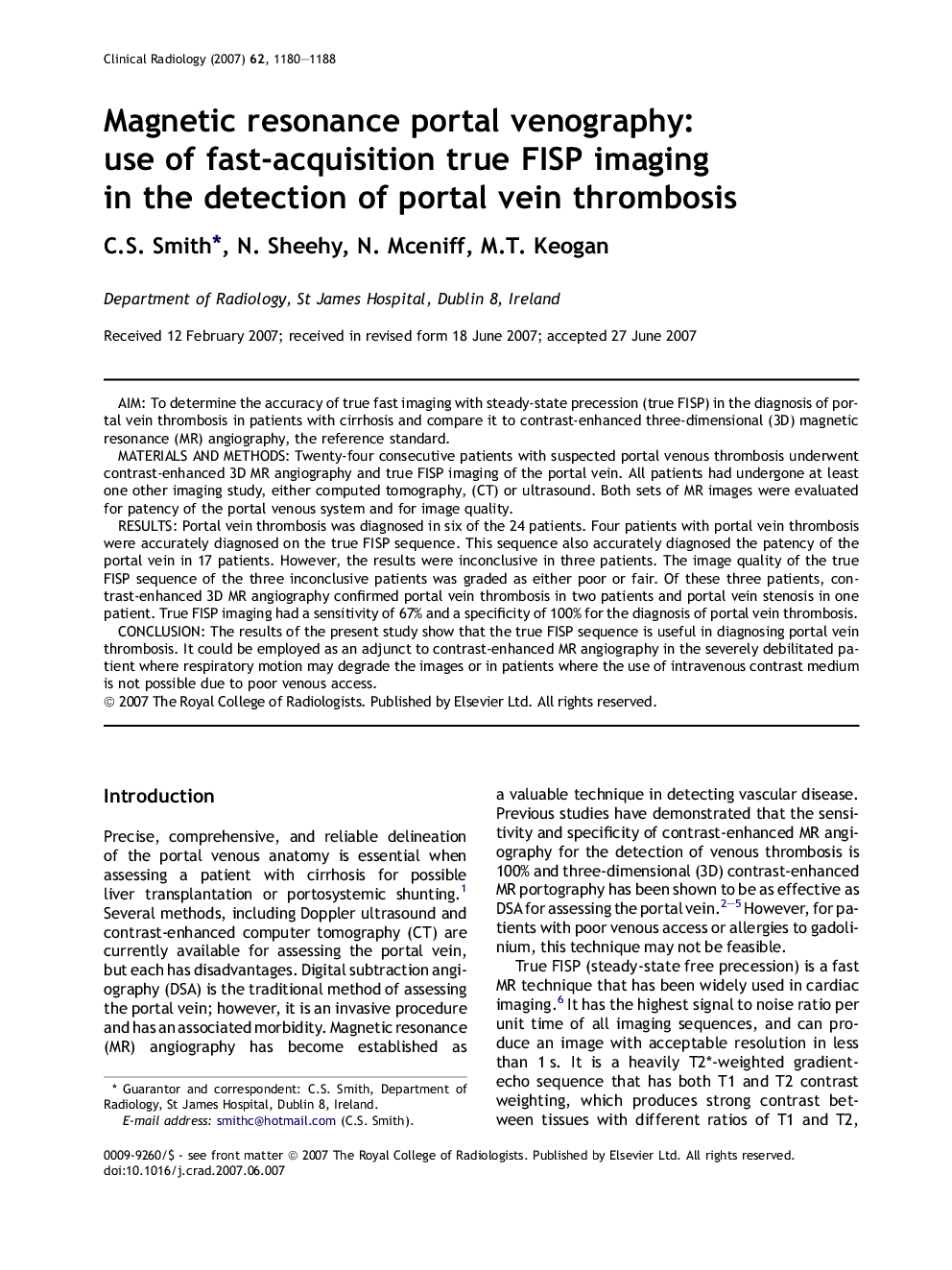| Article ID | Journal | Published Year | Pages | File Type |
|---|---|---|---|---|
| 3983675 | Clinical Radiology | 2007 | 9 Pages |
AimTo determine the accuracy of true fast imaging with steady-state precession (true FISP) in the diagnosis of portal vein thrombosis in patients with cirrhosis and compare it to contrast-enhanced three-dimensional (3D) magnetic resonance (MR) angiography, the reference standard.Materials and methodsTwenty-four consecutive patients with suspected portal venous thrombosis underwent contrast-enhanced 3D MR angiography and true FISP imaging of the portal vein. All patients had undergone at least one other imaging study, either computed tomography, (CT) or ultrasound. Both sets of MR images were evaluated for patency of the portal venous system and for image quality.ResultsPortal vein thrombosis was diagnosed in six of the 24 patients. Four patients with portal vein thrombosis were accurately diagnosed on the true FISP sequence. This sequence also accurately diagnosed the patency of the portal vein in 17 patients. However, the results were inconclusive in three patients. The image quality of the true FISP sequence of the three inconclusive patients was graded as either poor or fair. Of these three patients, contrast-enhanced 3D MR angiography confirmed portal vein thrombosis in two patients and portal vein stenosis in one patient. True FISP imaging had a sensitivity of 67% and a specificity of 100% for the diagnosis of portal vein thrombosis.ConclusionThe results of the present study show that the true FISP sequence is useful in diagnosing portal vein thrombosis. It could be employed as an adjunct to contrast-enhanced MR angiography in the severely debilitated patient where respiratory motion may degrade the images or in patients where the use of intravenous contrast medium is not possible due to poor venous access.
